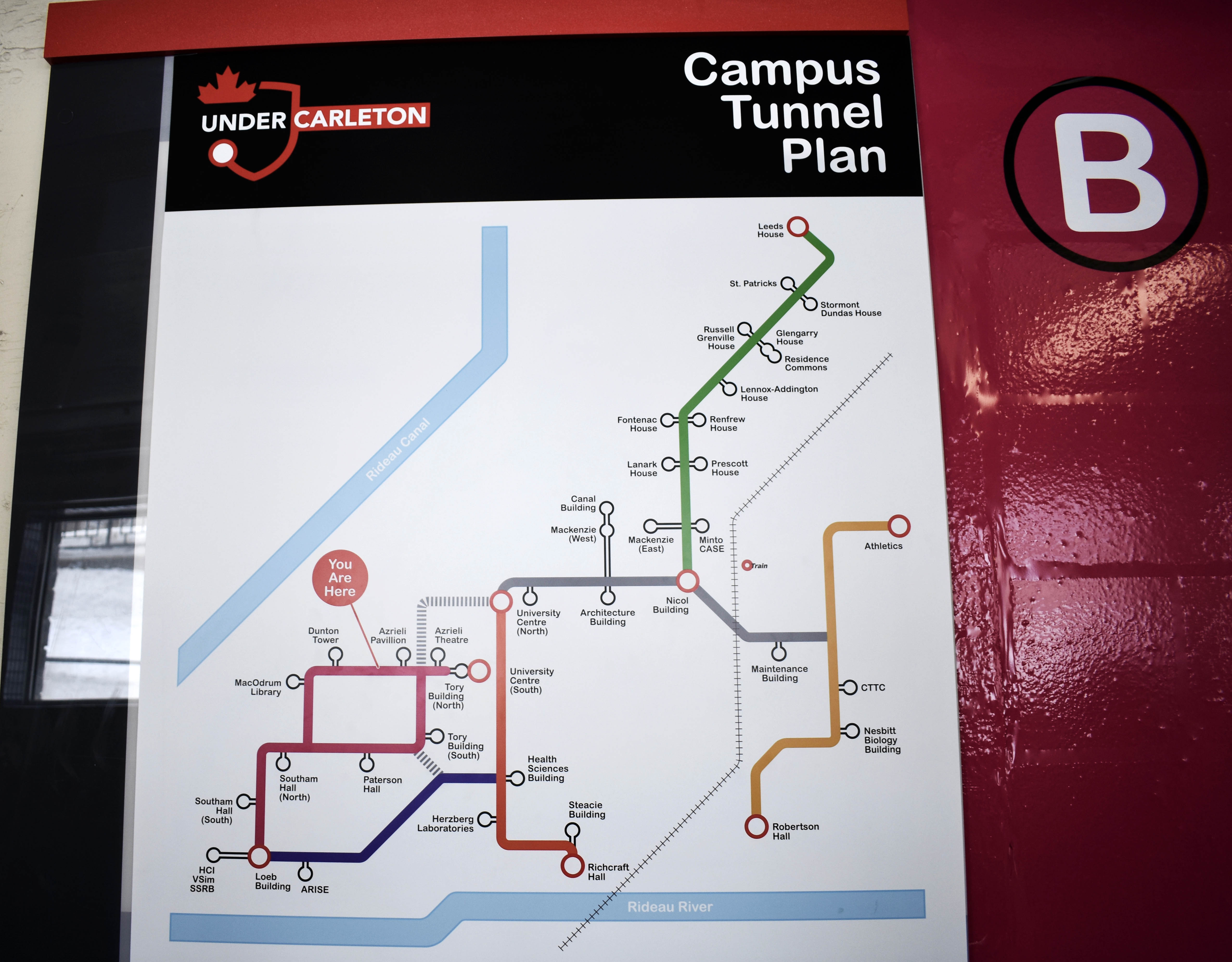A pilot project called “Under Carleton” aims to make the tunnel system at the university easier to navigate.
The project—currently only running between MacOdrum Library and Tory Building—is a wayfinding system that was introduced last month and will be tested until the end of April.
It’s made up of two parts aimed at simplifying the navigation process inside the tunnels: a simplified, colour-coordinated map for students to use and a Bluetooth-powered app called “Key2Access” that aims to help students with disabilities with their navigation across campus.
A user for Key2Access can connect to a series of Bluetooth beacons to track their location inside the tunnels on their iPhone or Android device. The app does not require navigators to use WiFi or data for it to work properly.
Key2Access was introduced last year at a City Hall meeting by the City of Ottawa and will be used under the pilot project to help Carleton students with on-screen prompts and audible warnings about the terrain or incline in certain spots of the tunnels.
Alisdair MacRae, who works at the Office for Research Initiatives and Services, said he came up with the idea for the colour-coordinated maps after starting graduate school at Carleton and repeatedly getting lost in the tunnels.
“I had worked at the art gallery for about a decade, at the north end of campus, so my world was kind of small,” MacRae said. “When I started taking classes, especially at the south end of campus . . . basically, I got lost.”
In November, MacRae said he formally pitched his colour-coding idea to the Office of Quality Initiatives at Carleton. He said his idea quickly made waves and attracted the attention of Carleton’s Facilities Management and Planning (FMP).
“Our assistant vice-president, Gary Nower, set up a meeting with Alisdair and a few other individuals he thought would be pertinent,” said Kristine Nadon, director of space management and capital planning at FMP.
Nadon said Richard Cronin, a director for the FMP, and Dean Mellway, a special advisor for the Research, Education, Accessibility and Design (READ) program, particularly contributed for Under Carleton alongside MacRae.
“Within half a day, Richard had come up with his first concept,” Nadon said. “We refined it, and then we thought, ‘we’ve got to a level where we would like to discuss it further and get more inputs,’ so we invited Dean Mellway to come in to give us input on accessibility.”
Mellway, a former Paralympic athlete, said he helped arrange the inclusion of Key2Access into the pilot project.
“We got consulted when they were doing the plan for the pilot,” Mellway said. “I proposed that we talk to the Key2Access folks and see if they would help us load a trial with 12 beacons in that section of the tunnel.”
Mellway said the audible commands offered by Key2Access will help ease tunnel accessibility for people with vision and mobility problems, adding that it could also help visitors to campus or students new to the university.
Shawn Humphrey, chairperson for the Carleton University Students’ Association (CUSA) and a person with a visible disability, said the pilot project reinforced the university’s commitment to ensuring accessibility on campus.
“I was accepted to both the University of Ottawa and Carleton, and a large part of the reason I chose Carleton was the better accessibility,” Humphrey said.
Members of the Carleton community can provide feedback for the pilot project using QR codes on the new maps or through an online survey sent out to students via email.
Image by Harriett Smith






